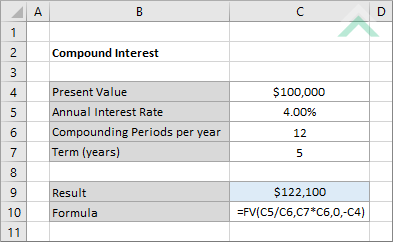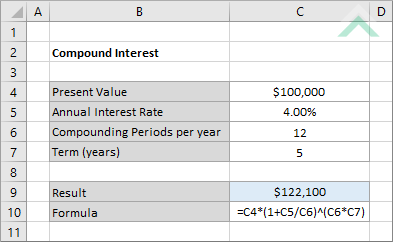Compound Interest
This tutorial shows how to calculate compound interest in Excel

|
=FV(C5/C6,C7*C6,0,-C4)
|
GENERIC FORMULA
=FV(rate, nper, -pmt, -pv)
ARGUMENTS EXPLANATION This formula uses the FV function to calculate the compound interest, based on the selected parameters, and return the future value of an investment.
This function is driven by the present value of an investment, interest rate, number of periods and periodic payment. Given that we don't have the periodic interest rate, we calculate this by using the annual interest rate and divide it by the number of periods per year.
In this example the formula calculates the future value, with compounded interest, by using the initial investment (present value), annual interest rate, compounding periods per year and the term (in years) that you are calculating for. |

|
=C4*(1+C5/C6)^(C6*C7)
|
GENERIC FORMULA
=pv*(1+rate/n)^(term*n)
ARGUMENTS EXPLANATION |
| Related Topic | Description | Related Topic and Description |
|---|---|---|
| Loan to Value Ratio | How to calculate the Loan to Value Ratio (LVR) in Excel |
